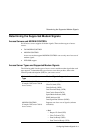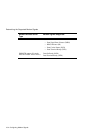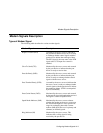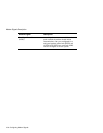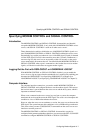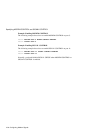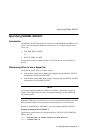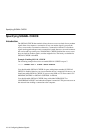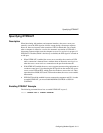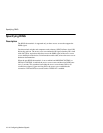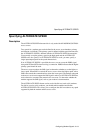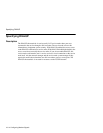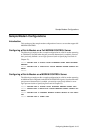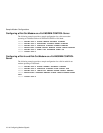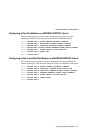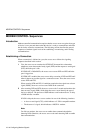
Configuring Modem Signals 10-11
Specifying DTRWAIT
Specifying DTRWAIT
Description
When functioning with modems and computer interfaces, the access server port
normally asserts the DTR signal at all times except during a disconnect sequence.
However, there are instances when assertion of DTR is undesirable. For example,
when a computer is offered as a service, the automatic reassertion of DTR after a
disconnect sequence might cause the computer to act as if a session is in progress. If
DTRWAIT is disabled, which is the factory-set default, the DTR signal is asserted on
an idle port.
• When DTRWAIT is enabled, the access server can delay the assertion of DTR
until a connection is detected from a modem when an interactive user logs in or
when the access server receives a connection to the port from the network.
• With DTRWAIT enabled, the access server supports autoanswering equipment on
a modem-control port. Upon detecting the RI signal from the modem, the access
server asserts DTR and RTS, which allows the modem to answer the call. Then,
upon detection of DSR, DCD, and CTS from the modem, the access server enables
data transfer.
• DTRWAIT should be enabled for ports connected to computers and PCs. In order
to enable DTRWAIT, you must enable MODEM CONTROL or SIGNAL
CONTROL.
Enabling DTRWAIT Example
The following command shows how to enable DTRWAIT on port 3:
Local> CHANGE PORT 3 DTRWAIT ENABLED



